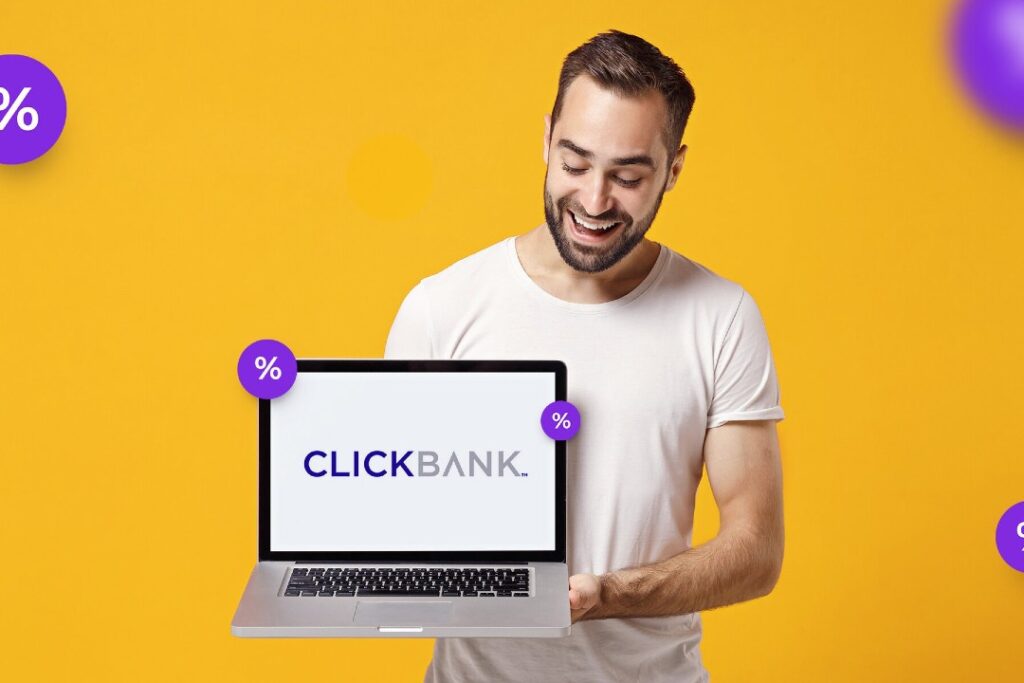. Finding the best products to promote on ClickBank requires a strategic approach that balances market demand, competition, product quality, and alignment with your audience. Below is a detailed, step-by-step guide to help you identify high-potential products on ClickBank for affiliate marketing success in 2025.
Step 1: Understand ClickBank and Its Metrics
ClickBank is a leading affiliate marketing platform that connects product creators (vendors) with affiliates. It offers a wide range of digital and physical products across niches like health, fitness, wealth, relationships, and more. To choose the best products, you need to understand key ClickBank metrics displayed in the marketplace:
- Gravity Score: Indicates how many affiliates have successfully sold the product in the last 12 weeks. A score of 20–70 is ideal for beginners, as it shows demand without overwhelming competition. High gravity (100+) often means high competition, while low gravity (<10) may indicate low demand.
- Initial $/Sale: The average commission earned per initial sale (not including rebills or upsells).
- Avg $/Conversion: The total average commission per conversion, including upsells and rebills. Aim for products with at least $18 per sale to justify your marketing efforts.
- Avg %/Sale: The percentage of the sale price paid as a commission (often 50–75% for digital products).
- Recurring $/Conversion: The average commission from recurring payments (e.g., subscriptions). Products with rebills can provide passive income.
- EPC (Earnings Per Click): Measures how much affiliates earn per click sent to the offer. Higher EPCs indicate better-converting products.
Step 2: Choose a Profitable Niche
Selecting the right niche is critical to your success. A niche should have high demand, manageable competition, and align with your interests or audience.
Identify Popular Niches:
Health and Fitness: Includes weight loss (e.g., Custom Keto Diet, The Smoothie Diet), supplements (e.g., Resurge, Biofit), and dental health. This is a high-demand, competitive niche with strong margins.
Wealth/Make Money Online (MMO): Covers online business, investing (e.g., Forex Trendy), and entrepreneurship. High commissions but competitive.
Relationships: Includes dating advice (e.g., The Ex Factor) and personal development.
Spirituality and Personal Development: Products like Numerologist or Billionaire Brain Wave appeal to audiences interested in self-improvement.
Education/Courses: Online courses in music, writing (e.g., Sqribble), or skills development have broad appeal and lower competition.
Match Your Audience:
Choose a niche that resonates with your existing audience (e.g., blog, YouTube channel, or email list) or one you’re passionate about.
Research audience pain points using forums (e.g., Reddit, Quora), social media, or keyword tools like Google Trends to ensure demand.
Avoid Overly Broad or Narrow Niches:
Too broad (e.g., “health”) makes it hard to rank or target effectively.
Too narrow (e.g., “yoga for left-handed seniors”) may limit your audience size.
Step 3: Access and Navigate the ClickBank Marketplace
To find products, you’ll need a ClickBank account. Here’s how to get started:
Sign Up for a ClickBank Account:
Visit www.clickbank.com and click “Start Here” to create a free account. Enter your details (name, email, phone number) and set up payment preferences (e.g., direct deposit, Payoneer).
Access the Affiliate Marketplace:
Log in, click the “Affiliate Marketplace” tab, or use the “Marketplace” link from your account
Use Filters and Search Tools:
Browse by Category: ClickBank organizes products into categories like Health & Fitness, E-Business & E-Marketing, or Spirituality. Start with a category aligned with your niche.
Sort Results: Use the “Sort Results By” dropdown to order by Gravity, Initial $/Sale, Avg $/Conversion, or Recurring $/Conversion.
Advanced Filters: On the left side of the marketplace, filter by:
- Offer Type: Digital, physical, or recurring.
- Gravity Range: Set a minimum (e.g., 20) and maximum (e.g., 70) to find balanced products.
- Commission: Look for products with at least 50% commission or $18+ per sale.
- Language: Ensure the product matches your audience’s language.
- Billing Type: Prioritize recurring billing for passive income.
Search by Keywords:
Use specific keywords related to your niche (e.g., “weight loss,” “learn guitar”). For precise results, use quotes (e.g., “weight loss supplement”) or operators like AND/OR.
Step 4: Evaluate Product Quality and Potential
Not all ClickBank products are equal. To avoid promoting low-quality or scammy products that could harm your reputation, evaluate the following:
Check the Landing Page:
Visit the product’s landing page (linked in the marketplace). Look for:
- Professional Design: High-quality visuals, clear branding, and no clickbait vibes. A good landing page converts at 3–25%, while poor ones convert below 3%.
- Video Sales Letter (VSL): Products with optimized VSLs (scripted videos guiding viewers to purchase) often convert better. Check for engaging copy, clear CTAs, and upsell opportunities.
- Mobile Optimization: Ensure the page is mobile-friendly, as most traffic may come from mobile devices.
Example: Synergy Spanish has a sleek, professional landing page with high-quality videos, making it a strong choice.
Review Affiliate Tools:
Check the vendor’s affiliate tools page (linked in the marketplace). Look for:
- Promotional Materials: Banners, email swipes, and pre-written content optimized for conversions.
- Target Audience Info: Ensure the product matches your audience’s demographics and interests.
- CPA Options: Some products offer Cost Per Action (e.g., lead generation) instead of sales-based commissions.
Test the Product:
Contact the vendor (via the affiliate tools page) and request review access to test the product. This helps you verify quality and speak authentically to your audience.
Look for honest reviews on forums, blogs, or Reddit to gauge customer satisfaction and avoid products with high refund rates.
Assess Conversion Potential:
High EPC: Products like Kerassentials ($1+ per click) or NanoDefense Pro ($150 avg. commission) indicate strong conversion potential.
Low Refund Rates: Products like Piano For All (5% refund rate) or Brain Training For Dogs are reputable and less likely to lead to chargebacks.
Upsells and Rebill Opportunities: Products with upsells (e.g., StrikePen, $72 additional commission) or recurring subscriptions (e.g., 12 Minute Affiliate, $22/month) increase long-term earnings.
Step 5: Analyze Competition and Demand
To maximize profits, find products with strong demand but manageable competition:
Use Gravity Wisely:
A gravity score of 20–70 indicates demand without excessive competition, ideal for beginners. Avoid products with very high gravity (e.g., 100+) unless you have a strong marketing strategy, as they’re saturated.
Note: Gravity doesn’t directly correlate with conversion rates, so use it as a starting point, not the sole criterion
Competitor Analysis:
Use tools like SEMrush, Ahrefs, or spy tools to analyze competitors promoting similar products. Look for gaps in their strategies (e.g., untapped keywords or platforms).
Check social media (e.g., Instagram, YouTube) for influencers promoting the product. If few are promoting it, it may be a less competitive opportunity.
Keyword Research:
Use tools like Google Keyword Planner or Ubersuggest to find high-demand, low-competition keywords related to the product (e.g., “best weight loss supplement 2025”).
Ensure the product aligns with trending search terms to drive organic traffic.
Step 6: Consider Your Promotion Strategy
The best product is one you can effectively promote to your audience. Consider:
Traffic Sources:
Organic Traffic: Products like digital courses (e.g., Piano For All) or low-cost digital products (e.g., Billionaire Brain Wave) convert well with organic traffic due to lower price points and higher conversion rates.
Paid Traffic: High-ticket products (e.g., Resurge, $116 avg. commission) or supplements with triple-digit payouts are better for paid ads (e.g., Facebook Ads, YouTube Ads).
Example: Kerassentials converts across email, Facebook, Native, and Google Ads, making it versatile.
Audience Fit:
Match the product to your audience’s demographics. For example, NanoDefense Pro targets men and women over 30 interested in nail health, while Yogaburn appeals to women seeking fitness solutions.
Use preselling (e.g., blog reviews, YouTube videos) to build trust and boost conversions by 5–10x.
Email Marketing:
Build an email list to capture leads and promote products over time. Use vendor-provided email swipes but customize them to avoid spam flags. Test swipes on a small group first.
Products with opt-in forms on landing pages may benefit vendors more than affiliates unless your affiliate link is included in follow-up emails.
Step 7: Test and Optimize
Track Performance:
Use ClickBank’s analytics tools to monitor EPC, conversion rates, and commissions. Focus on products driving the most revenue (e.g., if two products generate 90% of commissions, prioritize them).
Use a tracker like Voluum to measure traffic and conversions accurately.
A/B Test Promotions:
Test different promotional materials (e.g., banners, email swipes) and traffic sources to optimize conversions.
If EPC exceeds CPC, the product is profitable; if not, adjust or switch products.
Scale Successful Campaigns:
Once a product performs well, scale by increasing traffic (e.g., more content, higher ad spend) or promoting related products (e.g., Hyperbolic Stretching’s supplementary programs).
Step 8: Leverage ClickBank Resources
Monthly Top Products List: Check ClickBank’s blog for monthly updates on trending products (e.g., Breathe, #1 in July 2025).
Spark by ClickBank: This official education platform offers video training, community support, and tools for beginners.
Affiliate Tools Pages: Use vendor-provided resources like banners, swipes, and landing pages to streamline promotions.
Contact Vendors: Reach out for CPA opportunities, higher commissions, or exclusive offers for high-volume affiliates.
Step 9: Avoid Common Pitfalls
Don’t Chase High Gravity Blindly: High gravity often means high competition, not high conversions.
Avoid Scammy Products: Poor-quality products hurt your reputation. Check reviews and landing pages carefully.
Don’t Spread Too Thin: Focus on one niche and 1–3 products to avoid diluting your efforts.
Test Before Scaling: Don’t invest heavily in paid ads until you confirm a product converts well with organic traffic.
Final Tips
Start Small: Begin with organic traffic (e.g., blog, YouTube) to test products before investing in paid ads.
Build Authority: Create content (e.g., reviews, tutorials) to establish trust and drive conversions.
Stay Updated: Check ClickBank’s Top Products blog monthly for trending offers.
Learn Continuously: Use Spark by ClickBank or follow experts on X (e.g. @DustonMcGroarty for health supplement strategies) to refine your skills.
By following these steps, you can systematically identify ClickBank products with high demand, reasonable competition, and strong conversion potential, setting you up for affiliate marketing success in 2025. For more details, visit www.clickbank.com or explore Spark by ClickBank for training.



